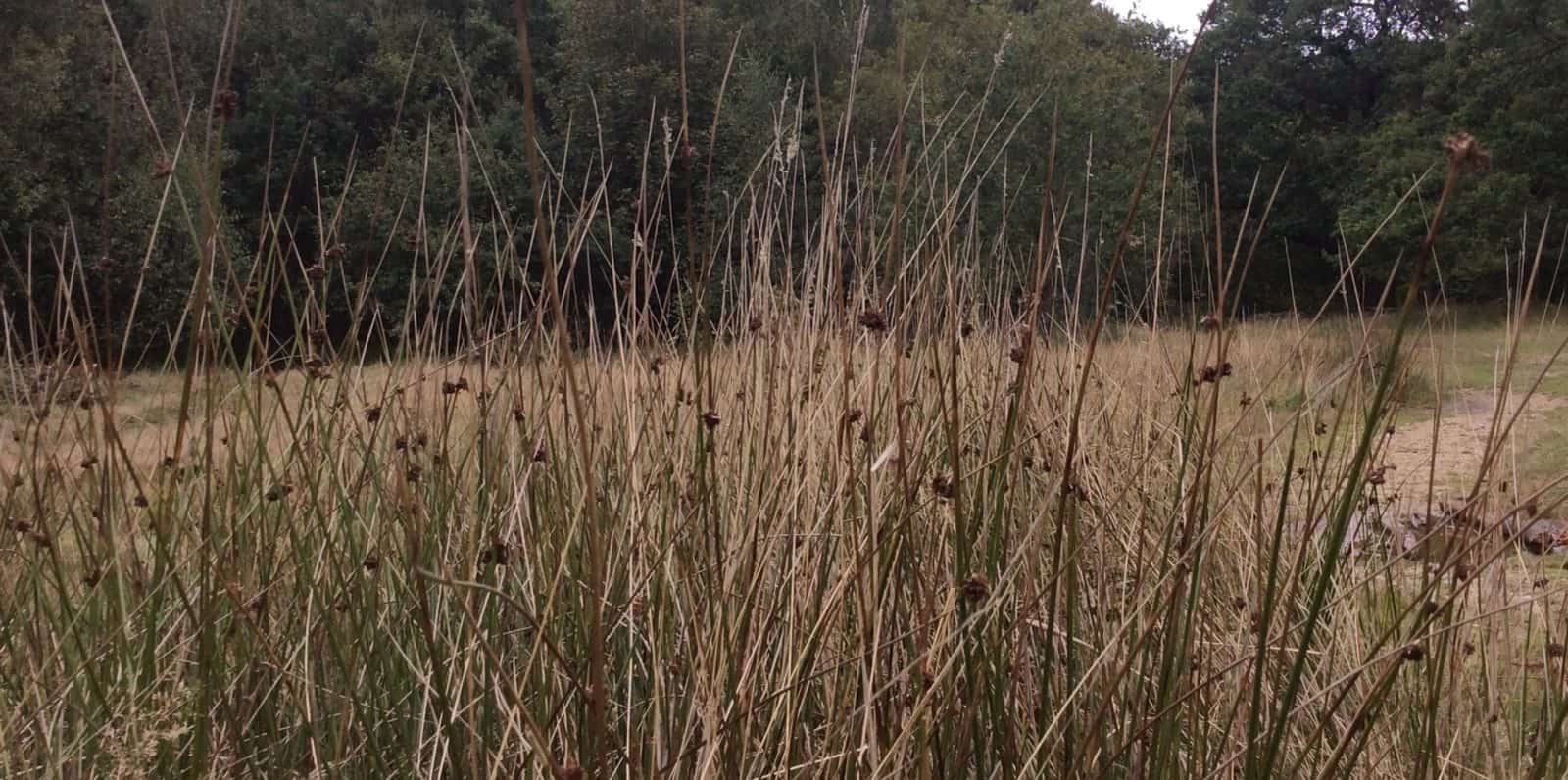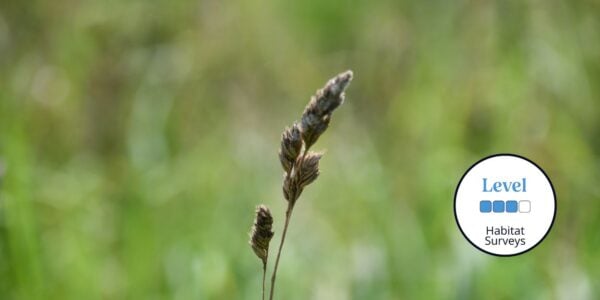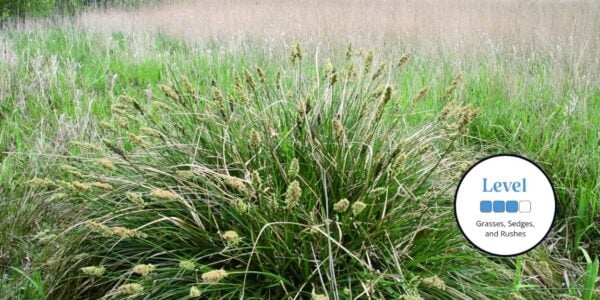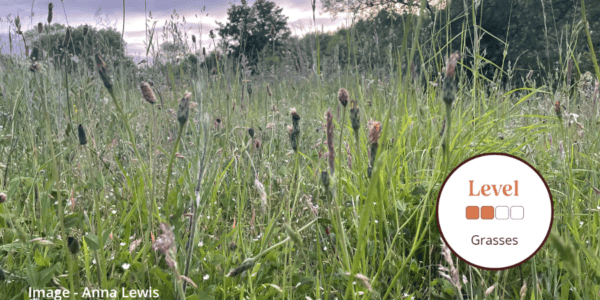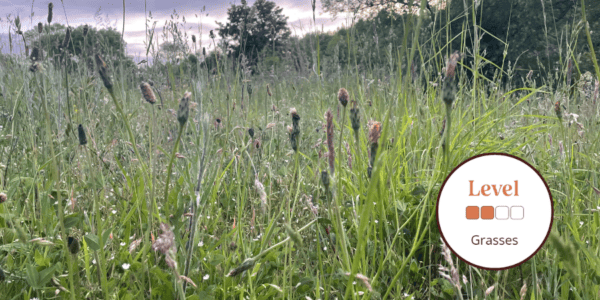This course is now Fully Booked.
You can view our Natural History courses here
This intermediate course will allow you to identify a variety of common grass species using vegetative features; a useful skill that is well worth acquiring.
By learning this technique you will have the ability to carry out surveys beyond the usual June- August flowering season.
In this course, we will look at flowering features briefly, and vegetative features in detail. We will look for grasses in various habitats: acid heathland, neutral grassland calcareous grassland and base-rich woodland. Grasses form the matrix of a wide range of habitats but are also of huge economic importance. There are about 10,000 species of grasses found throughout the world with around 200 found in the UK, learn how to identify some of the most common. Ecological consultants, staff and volunteers carrying out botanical surveys will all need to have the ability to identify at least the most common grasses if their job is to be done properly.
This course takes place in a stunning 18th-century country house situated within the North Downs just next to Box Hill in the beautiful Surrey countryside.
PLEASE NOTE the course fee is for tuition only. There is no accommodation provided with this course. If you would like to book accommodation, lunch and an evening meal at Juniper Hall, please email [email protected]
*Bookings will close if course capacity is reached
This course is for people who need to carry out botanical surveys – whether for environmental impact surveys, agricultural surveys, BSBI species recording or just for general interest.
Who Should Attend?
Nature enthusiasts, Students, Rangers, Early career consultants and ecologists.
Knowledge Level
Intermediate. Level descriptors can be found on the following webpage: Framework and Course Level Descriptors
Prior Knowledge
Knowledge of flowering parts and key terminology. Some experience in keying out plants, in general, is useful, as would be knowledge of flowers of a few of the commonest grasses.
What will be covered during this course?
-
- Flowering part features (very briefly)
- Vegetative features of grasses
- Practice using vegetative keys
- Indicator species for different grassland habitats
- Tips for identifying species
By the end of the course, you will be able to:
-
- Describe the vegetative features of a grass
- Confidently use a range of keys to identify grasses
- Describe the indicator species for different grassland habitats
- Identify some common species of grass using vegetative features
- Share this knowledge with friends, family, and fellow volunteers
The course gives you the opportunity to immerse yourself in a new subject and acquire novel skills. Our fantastic tutor will combine the use of classroom-led learning and outside learning opportunities to give individuals the skills and confidence to progress their learning.
-
- See the ‘Example Timetable’ and ‘What’s Included’ sections below for more information about this course
- Upon booking, you will need to provide individual details of all attendees
- Please email [email protected] if you have any questions
Group Bookings Made Easy
If you have a group of 10 or more individuals wanting to complete one of our courses, our team are available to discuss your options – from discounts to private team courses.
-
- Discounted rates
- Privately run courses for your group
- Bespoke courses developed specifically for your needs
If we are unable reach viable numbers for this course, we will inform you of the course cancellation 14 days prior to the course run. We would recommend when purchasing accommodation and/or travel you should take out your own insurance.
Tutor: Judith Allinson
Judith Allinson is a former member of FSC staff and co-author of the AIDGAP Key to the Vegetative Stages of Grasses. She spent several years carrying out botanical surveys for English Nature. She has run the Grass Identification in Spring course at Juniper Hall for a number of years and has also taught grass identification courses at Kindrogan, Nettlecombe Court and Malham Tarn Field Centres.Book with Confidence
We understand the difficulties of making plans in the current situation when guidelines continue to change, and insurance conditions are being tightened. In response, we will continue to offer additional flexibility. Find out more here
Example Timetable
Example Timetable
This timetable is subject to change but should give a clear outline of what to expect
- Please arrive in time for the course to start promptly at 10:00 am
- The course will end at 5:00 pm
Day 1
| 9:30am | Tutor introduction and classroom session covering:
|
| 11:30am | Break – refreshments not provided |
| 11:30am | Lab practical work |
| 12:30pm | Field session at Headley Heath |
| 1:30pm | Lunch - not provided |
| 2:30pm | Continued field time |
| 3:15pm | Return to Juniper Hall and break - refreshments not provided |
| 3:45pm | Sort specimens and use of keys |
| 5:00pm | End of course |
Please note - accommodation, refreshments and an evening meal are not included
Day 2
| 9:30am | Recap of day 1 |
| 10:00am | Field session in Woodland Grasses |
| 11:00am | Return to lab and press plants /use keys |
| 12:30pm | Lunch – not provided |
| 1:30pm | Grasses of Neutral Grassland |
| 4:30pm | Return to classroom, summary and final questions |
| 5:00pm | End of course |
What's Included
The course has been carefully created by expert tutors and educators to help you build your knowledge and apply it within the field surrounded by like-minded individuals.
The course includes:
- Classroom learning covering the theory of the species
- Field excursions to apply new knowledge
- Expert tuition for which the Field Studies Council is renowned
You can rest assured that the absolute best content from an expert in environmental education will be provided. In choosing a Field Studies Council course, you will be joining thousands of people who learn with us each year.
Before You Attend
What to Bring:
- Notebook and pencil
- Lunch and refreshments
- Sensible footwear and clothing for being outdoors
- Small bag to carry personal items
If you have them:
- Hand lens
- Your own reference book(s) - If you have access to the ‘Grasses: a guide to identification using vegetative characters’, Hilary Wallace, (FSC AIDGAP) ‘Grasses’, CE Hubbard and/or the BSBI handbook, ‘Grasses of the British Isles’
There will be a member of staff with first aid training and access to a first aid kit on site. If you have special medical or access requirements, please let us know as soon as possible so we can plan the course.
Sorry this course has ended

